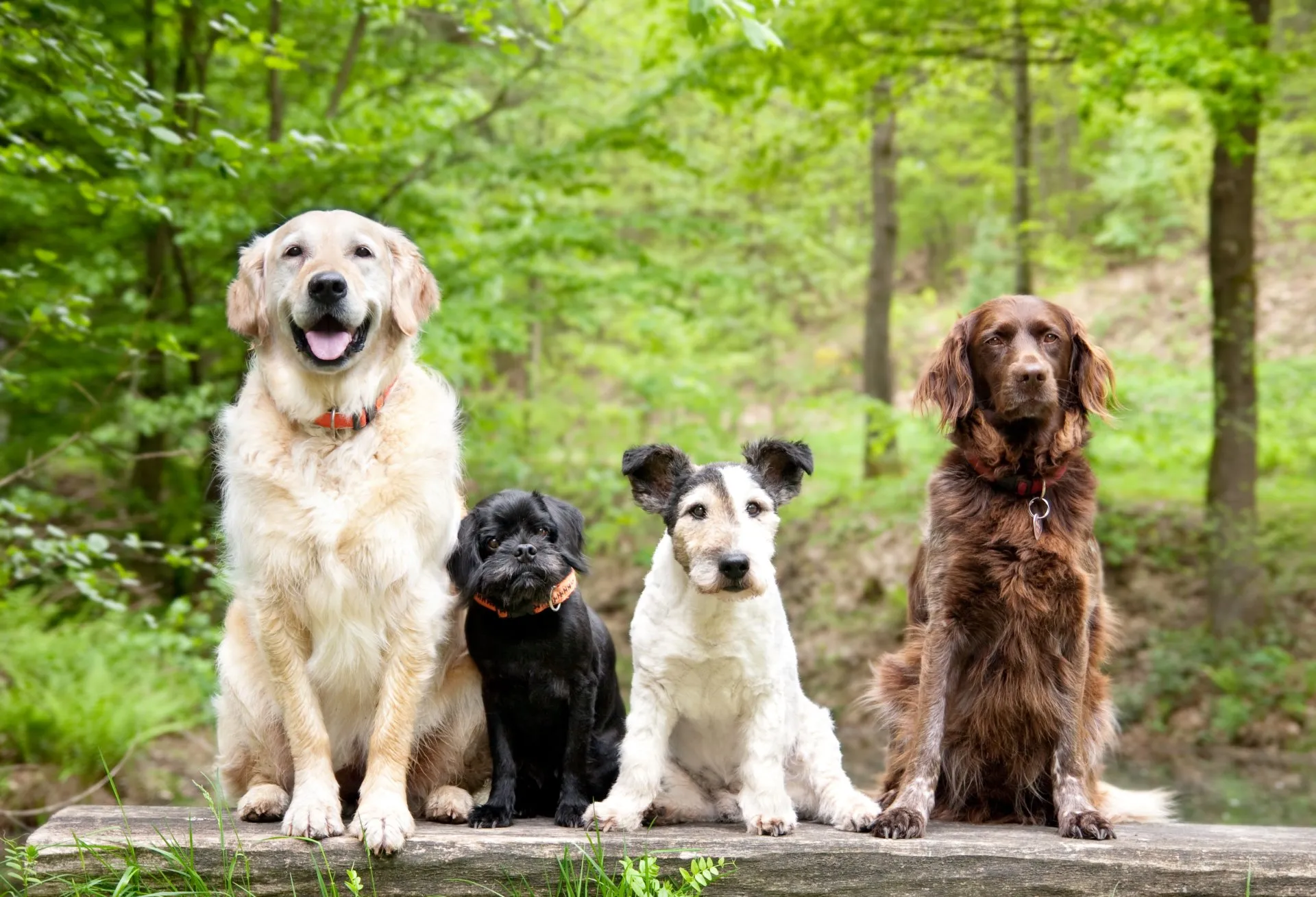Welcome to Dog Bite Prevention Week! Recognized across the country as National Dog Bite Prevention Week, this annual initiative is dedicated to raising awareness about responsible dog ownership and effective strategies that reduce the risk of dog-related injuries. According to the Centers for Disease Control and Prevention, approximately 4.5 million Americans are bitten by dogs each year, resulting in thousands of emergency room visits. These startling numbers highlight the necessity of education and proactive measures to keep both humans and pets safe. During this weeklong observance, communities, veterinary professionals, and animal welfare organizations unite to share resources on canine behavior, responsible pet ownership, and the critical role of proper training. By embracing positive reinforcement techniques, respecting dog body language, and ensuring consistent supervision, we can lower the incidence of dog bites. Join us in promoting a safer, more compassionate environment for everyone during National Dog Bite Prevention Week and beyond.
National Dog Bite Prevention Week always takes place during the second week of April. This is a pretty serious issue. Every year, roughly 4.5 people are bitten by dogs. While fortunately many of those bites do not cause serious injury, many do require medical treatment, and a small number result in severe injuries. A local veterinarian goes over some information about dog bites in this article.
What Are The Statistics On Dog Bites?
The figures on this one are pretty concerning. According to data from the AMVA, there are between 84 and 89 million pet dogs in the U.S., and about 8 million in Canada. Or, to put it a bit differently, about 45 percent of homes have dogs. We already mentionted that there are about 4.5 million biting incidents per year. Unfortunately, that figure is rising. There was about a ten percent increase in dog bites in 2023.
Why Do Dogs Bite?
Dogs bite for a variety of reasons. While there are cases of loose dogs that are just aggressive, and will attack seemingly at random, most dogs bite as a reaction to something, and are usually acting to protect themselves or something or someone they value.
Here are some possible reasons:
- Being startled
- Being teased
- Feeling crowded
- Over-excited play behavior
- Defending territory
- Defending food
- Defending puppies
- Defending people
- Prey drive
- Stress
- Fear
- Pain
- Distress
- Anticipation of pain/punishment
- Dominance
- Anxiety
- Rabies
How Can I Tell If A Dog Is Going To Bite?
During National Dog Bite Prevention Week, it’s vital to debunk common myths about dog behavior. You may often hear stories of people who have been bitten, claiming that the dog bit them with no warning. The truth is, dogs usually give plenty of warning. It’s just that many people don’t know what to look for and, therefore, miss the signals.
Learning a bit about Fido’s body language is really important, even—and perhaps especially—if you don’t have a dog of your own. There are many misconceptions about canine body language. For instance, most people know that dogs wag their tails when they are happy. However, it’s not as commonly known that they also wag their tails when they are uneasy: they just do it more slowly.
Here are some of the warning signs that a dog is feeling uneasy:
- Growling
- Yawning
- Licking The Lips
- Stiff posture/freezing
- Showing the whites of the eyes
- Furrowing In The brow
- Tension In The Jaw
- Tail Slowly Wagging or held low
- Shaking
- Drooling
- Sweaty paws
If you notice any of these in your dog, back off and give Fido some space.
Who Is Most At Risk Of Being Bitten By Dogs?
Sadly, children are most likely to be bitten. There are a few reasons for this. For one thing, very young children often move quickly. They may have high-pitched voices, which can set some pups on edge. They also do not know the do’s and don’ts of interacting with dogs.
Elderly people are also at high risk, as are workers who visit people’s homes. That includes mail men, delivery drivers, meter readers, and others.
How Do I Keep My Kids Safe From Dog Bites?
It’s never too soon to start teaching a little one the basics of communicating with Fido, and showing them what they should and should never do.
Here are the major things to teach children:
- Never pull Fido’s tail or ears.
- Don’t take a dog’s toys, treats, or food.
- Never reach through a fence or barrier to touch a dog.
- Never touch or pet a loose dog.
- Always approach dogs from the side.
- Don’t disturb a dog that is sleeping or eating.
- Stand still if a dog wants to sniff you.
- Never tease a dog.
- Always ask an owner’s permission before petting a dog.
- Never hug a strange dog.
- Don’t look a strange dog in the eye.
- If they find a hurt dog, get an adult.
Children also sometimes startle dogs by running past them, or sometimes just being loud. There’s also a lot of room for misinterpretation with toys, such as stuffed animals. For instance, Fido may want a child’s teddy bear, or the child may want Fido’s plushie.
Keep in mind that things can escalate very, very quickly. Never leave children and dogs unattended. If you have a family dog, monitor all interactions between your young one and the dog.
What Do You Do If A Dog Attacks You?
Hopefully, you’ll never need to use this information. If you are approached by a dog that looks threatening, stop and stay still. If you say anything, speak calmly. You can back away slowly, but don’t run: that may just provoke the dog.
If the dog does attack, and you are pulled or knocked to the ground, curl into a ball and protect your face and head with your arms.
If you often like to take your pooch to trails or spots where you may run into a loose dog, it’s not a bad idea to have a deterrent with you, such as pepper spray.
How Do I Prevent My Dog From Biting?
During National Dog Bite Prevention Week, it’s crucial to remember that the vast majority of bites come from family pets. As a dog owner, it is your responsibility to do everything you can to prevent your dog from biting.
Here are some tips for that:
Keep Up With Fido’s Veterinary Care: This is important for many reasons, first and foremost being Fido’s health and well-being. Dogs are more likely to bite if they are in pain or discomfort, so doing everything you can to keep your pet in tip-top shape can help. This includes addressing any skin issues or allergies that might be causing irritation – our Pet Allergies Vet Dermatology can help with these concerns. The other reason this is important is that if your dog bites, and he isn’t current on his rabies protection, your pet could potentially be put down by authorities. Laws on this vary from place to place, but regardless of where you live, this is definitely not something to take lightly. If your canine companion hasn’t been to the vet in a while, make that appointment today!
Choose A Family Pet Wisely: While any dog can bite, it is true that some are more reactive than others. Research Fido’s breed and history, and choose a friendly, well-behaved pup. For example, Yorkshire Terriers, celebrated on Yorkie Day, are known for their spirited yet affectionate nature. Regardless of breed, proper training and socialization are key to raising a well-mannered dog.
Socialize Your Puppy: Did you know that dogs that were not properly socialized are more likely to bite? There is a specific window of time for socialization to happen: by the time little Fido is about 12 weeks old, time is running out. Ask your vet for socialization tips
Obey Leash Laws: Never let your canine buddy run around off-leash. If you have a yard, make sure that your fencing is secure.
Keep An Eye On Fido’s Behavior: Pay close attention to your pet, and watch for signs that he is feeling uneasy or uncomfortable. If you notice any indications that your canine pal is feeling stressed or threatened, or warning signs that he may bite, talk to your vet or a pet behaviorist.
Get Fido Fixed: Unneutered males are more likely to bite than fixed ones. Females in heat may have unwanted litters, and may cause agitation in males when they go into heat. Plus, there are already too many stray and homeless dogs in the world. You’ll also have a happier, calmer pooch on your hands!
Train Your Dog: Make sure that Fido knows and obeys basic obedience commands, such as Sit, Stay, and Come.
Keep Your Canine Buddy Happy: Making sure that Fido is getting lots of attention, exercise, and playtime will keep that tail wagging, and keep him from building up excess energy. Every dog has different needs on this, so ask your vet for specific care tips.
2025 National Dog Bite Prevention Week: Risks & Safety Tips
What percentage of dog bite victims require medical attention?
An estimated one in five dog bite victims require professional medical attention. Bites can vary widely in severity, with puncture wounds, tissue damage, and potential infections among the reasons that lead to these visits. Children, older adults, and individuals who regularly enter private residences, such as postal workers, are especially vulnerable. Healthcare providers often monitor for complications, including infection and scarring, emphasizing the seriousness of seeking professional care. Prompt treatment, alongside preventive strategies like proper training, socialization, and responsible dog ownership, helps reduce the likelihood of severe bite-related health issues.
What precautions should be taken when dogs interact with strangers or delivery personnel?
Allowing dogs a safe distance from those they perceive as intruders, such as delivery workers, helps reduce defensive or territorial behavior. A leash or secure fencing ensures controlled interactions and prevents the dog from running at unfamiliar people. Training the dog to obey verbal commands like ‘sit’ and ‘stay’ fosters calm behavior around strangers. Supervising every encounter is recommended to detect signs of anxiety, fear, or aggression. Avoid forcing direct contact or abrupt approaches that could alarm the dog. Setting predictable routines and letting the animal approach at its own pace also lowers the chances of bites or confrontations.
What are the year-over-year changes in dog bite incidents?
Dog bite incidents have been rising. The US sees around 4.5 million biting episodes per year, and current data points to a roughly 10% increase in 2023 compared with the previous period. Contributing factors may include an expanding pet population, with nearly half of households owning dogs, along with various triggers for canine aggression, such as pain, fear, or territorial instincts. Some increases may also stem from heightened reporting and awareness. Regular veterinary care, mindful socialization, and responsible handling can help curb this escalating trend and protect both dogs and the public.
When should someone seek medical attention for a dog bite?
Although many dog bites are minor, any break in the skin can carry a risk of infection. Prompt professional attention is advisable if bleeding is significant, the wound is deep, the bite is located on the face or joint, or if there’s any suspicion of contamination or foreign matter in the wound. Watch for signs of infection such as redness, swelling, warmth, or discharge. Seek treatment immediately if the dog’s rabies vaccination status is unknown or if symptoms like fever or severe pain develop. Early intervention reduces complications, especially in more vulnerable individuals like children or the elderly.
What medical treatments might be needed after a dog bite?
Medical interventions vary based on the wound’s severity and location. Thorough cleaning and disinfecting reduce infection risk, while antibiotics are sometimes prescribed for deeper or more contaminated wounds. Tetanus boosters or rabies shots may be administered if immunizations are incomplete or uncertain. In some cases, stitches or surgery address tissue damage and promote better healing. Medical professionals often look for warning signs such as increased redness, swelling, warmth, or discharge, particularly in areas close to joints or tendons. Prompt, appropriate care helps prevent complications and fosters a healthier recovery after a dog bite.
Do you have questions or concerns about your dog’s health or care? Is your canine buddy due for an exam? Contact us, your animal hospital in West Greenwich, RI, anytime!




!Social Media Icons